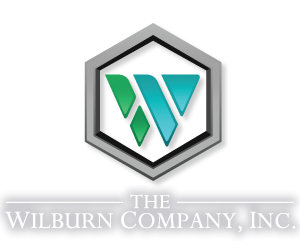
If you’re looking for commercial cleaning services, you’ve probably at least been exposed to the term “green cleaning.” You may not know exactly what that entails, though. Does green cleaning simply mean using “green” products? Is green cleaning just a buzzword? What does green cleaning in Baltimore look like today?
The unfortunate truth is that the meaning of the term “green cleaning” has become a bit obscure and ambiguous. The consequence of that obscurity is this: there are commercial cleaning companies that say they practice green cleaning in Baltimore, but don’t live up to the green cleaning standards.
It makes sense; green cleaning is an industry trend that’s worth capitalizing. And yet, to pay lip service to green cleaning instead of actually providing real green cleaning in Baltimore means offering cleaning that still has the same toxic, harmful chemicals.
Now, don’t let the presence and practices of impostors turn you off to the idea of implementing green cleaning in your facility. The actual benefits of true green cleaning in Baltimore are many – both in terms of its environmental impact, and in terms of the health benefits green cleaning can have for building occupants. Through the noise and obscurity, it is possible to find the right green cleaning company in Baltimore – the one with experience and actual green-cleaning know-how to get the job done.
With that in mind, let’s take a look at commercial green cleaning – what it really means, why it’s actually important, and how to find it in Baltimore.
What Does Green Cleaning in Baltimore Really Mean?
The truth is, if you walk into any grocery store today, you can most likely locate a bottle of floor polish or window cleaner that has the word “green” on it somewhere. Some products may even have markings in the form of logos or labels that proclaim the “greenness” of the package contents.
While these products may be satisfactory for personal use, green cleaning in a commercial capacity is a much larger endeavor – there’s more space, there are stricter standards of cleanliness, and there are more products needed.
For commercial green cleaning in Baltimore, the primary factor to consider before making a service decision is whether or not the company is certified. Certification can mean the difference betweenan average commercial cleaning company, and a company that’s gone through the rigorous, extensive green cleaning training that ensures proper product usage, procedures, and equipment.
So, commercial green cleaning is more than just the use of “green” cleaning products, although, admittedly, green products are a starting point).
What are Green Cleaning Products?
First: what, exactly, are green cleaning products? Of course, the first thing that probably comes to mind when you think of green cleaning products is that they are good for the environment. This is absolutely true; green cleaning products are designed to be less toxic than traditional products, which translates naturally into environmental friendliness.
Interestingly, though, green cleaning products aren’t primarily designed to be friendly to the environment; they’re designed to be friendly to people.
Traditional products favor aesthetic cleanliness over functional cleanliness. Here’s what that means: while we’ve been conditioned to associate the smell of bleach with cleanliness, the truth is that strong chemicals can actually be more harmful than helpful. Despite contributing to a “clean” appearance, traditional chemicals have actually had negative health implications for the people they’re meant to protect.
Today, the focus has changed. There are green products for every function: from green floor cleaners, to green window cleaners, and to green drying methods. Green products are designed to minimize harm.
What are Green Cleaning Procedures?
Green products are just the start, though. As soon as a commercial cleaning company makes the decision to pursue green cleaning, the impact is felt in all cleaning aspects. That includes putting green cleaning procedures into place.
Green cleaning procedures help to establish the techniques that are used during the cleaning process. These procedures are designed to be safe, effective, and to reduce the waste of cleaning materials. Every cleaning task has its own green cleaning procedure – from restroom maintenance, to trash removal, to floor cleaning, to dusting. Often, this entails a focus on prevention as opposed to treatment – the idea being that, if the spread of contaminants is prevented, strong chemicals as treatment will be less necessary.
The focus of green cleaning procedures, as with all green cleaning service components, it to increase cleaning efficiency and to maximize facility safety.
What does Green Cleaning Equipment Look Like?
In addition to implementing green cleaning procedure and using green products, green cleaning also means utilizing efficient equipment. After all, having the right products and the right procedures wouldn’t do much good if the cleaning company still used a dusty, old vacuum cleaner. Consequently, even vacuum cleaners must adhere to the Carpet and Rug Institute’s requirements for green cleaning. And, other powered pieces of equipment are required to meet specific noise levels and function under emission certifications.
So, Why Does Green Cleaning in Baltimore Matter?
Hopefully, you now have a more thorough understanding of what green cleaning actually entails. But you may still be wondering: why does green cleaning actually matter?
Well, there are many reasons why your business should consider implementing a green cleaning service to meet your professional commercial cleaning needs – and most of them have to do with the harmful effects of traditional cleaning practices.
From irritation of the eyes, lungs, or skin, to an increased likelihood of disease or harmful conditions, traditional cleaners often pose problems for building occupants. Depending on the type of building, and on how long occupants are inside, these risks may be magnified.
Consider hospitals, for example. Hospital staff tend to be exposed to indoor environments for long periods of time, as they work extended shifts. Or, manufacturing facilities, which deal with unique waste removal situations. All facilities carry a unique set of issues – but, in each case, green cleaning can help to minimize health risks.
Over time, a green-cleaned facility can reduce employee sick-time, help to avoid downtime, and improve overall efficiency. That’s on top of other benefits, like potential tax breaks, environmental friendliness, and improved facility value.
In the end, it’s more a question of how to implement green cleaning than a question of whether you should.
But, What Truly Makes a Commercial Cleaning Company Green?
For all of the products and procedures that impact green cleaning, the unambiguous standard of practice is Green Seal. Green seal has grown to symbolize environmental leadership and represent proven-green products and services.
As a leader in the space, Green Seal has 33 issued standards for green cleaning in over 400 products and service categories. To earn the Green Seal Standard for Commercial and Institutional Cleaning Services (or the GS-42 certification), a company must complete rigorous testing and training requirements. The standard is worth it, though: it’s a guarantee of quality.
GS-42 requirements include:
- Standard training practices, by which employees must take 24 hours of classes and testing on an annual basis to maintain the certification. Training includes assessments on OSHA standards and current green cleaning practices.
- Newly hired staff are required to undergo a 12-hour course before completing a year of employment.
- An established criterion for the products they purchase and use – from chemicals, soaps, paper towels, and toilet paper, to equipment such as vacuum cleaners and power washers.
- A communication program to provide transparency with building occupants, ensuring a communal commitment to health.
- Documentation, such as the company’s training, chemical tracking, the maintenance on their machines, and more to provide transparency and evidence of adherence.
These standards ensure that commercial cleaning companies training for the GS-42 certification can’t simply buy green products, put them on the shelves, and call the whole thing a day. Products are the smallest part of green cleaning.
Instead, the standard takes a systems approach to cleaning. There’s guidance provided for tools and products used for cleaning, and system guidelines for everything from staff training to service planning.
There’s an emphasis on environmental improvements that reduce toxicity, waste, and exposure to both building occupants and custodial staff. There’s a commitment to making sure that a facility is healthy.
Choose the Right Green Cleaning Company
At the end of the day, commercial cleaning companies must walk the walk as opposed to just paying lip service to green cleaning. If you’re looking for real green cleaning in Baltimore, make sure that you know exactly what you’re getting – and exactly what you aren’t.
In the Baltimore area, we’re proud to say that more businesses look to The Wilburn Company for their green cleaning needs. That’s because we have the Green Seal’s stamp of approval: the GS-42 certification, and a staff trained in the very latest techniques, tools, and products that are necessary for practicing green cleaning correctly.
From Dundalk, to Essex, to Fed Hill, we’re honored to provide green cleaning services that maximize the health and value of our clients’ facilities.
Your business deserves the best. Don’t settle for green cleaning that isn’t truly green. Contact us today to see how we can help you with green cleaning in Baltimore.
